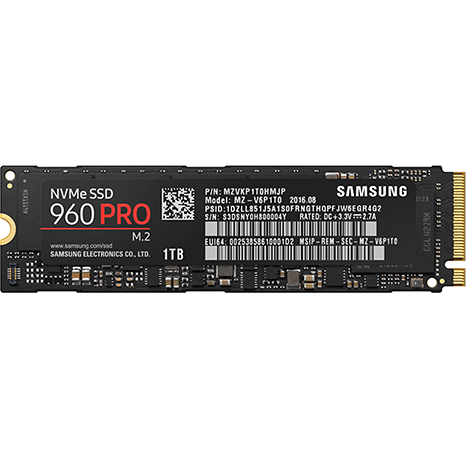Aplicata Quad M.2 NVMe SSD PCIe x8 Adapter Review
Why you can trust Tom's Hardware
Aplicata Quad M.2 Performance Testing
Comparison Products
We have a few similar products in the lab, but some come with difficult compatibility requirements and only work in a small number of branded systems. Others are only certified with specific NVMe SSDs. For our first NVMe HBA review, we're using the Aplicata Quad x8 with three sets of SSDs. We tested the drive with Samsung 960 Pro 1TB SSDs, older 950 Pro 512GB SSDs, and finally, a set of low-cost 240GB BPX drives from MyDigitalSSD.
We put the three Aplicata configurations up against a single Samsung 960 Pro 2TB NVMe SSD and an enterprise drive from Kingston.
Kingston developed the DCP1000 in conjunction with Liqid Technology and Phison. The drive uses four Phison PS5007-E7 SSDs with a healthy dose of overprovisioning (512GB raw/400 GB usable) to ensure strong application performance during heavy workloads. Kingston told us last year that the DCP1000 is an enterprise SSD that you can also use for demanding workstation applications.
The Test System
We're introducing a new test system that will pop up in our future reviews. Intel sent us a new Core i9-7900X 10-core processor and Crucial loaded us up with several kits of high-speed DDR4 to fill the eight memory slots. The Asrock X299 Taichi motherboard is the star of the show and supports Intel's new vROC feature. vROC allows the processor to act as a RAID controller, similar to Rapid Storage Technology (RST), but supports up to twenty drives in a single array. All we need is a compatible vROC dongle. Without a dongle, only Intel-branded SSDs work with the vROC RAID feature.
Testing Configuration
With our vROC configuration in limbo, we're forced to test the Aplicata Quad M.2 NVMe SSD PCIe x8 Adapter with Windows software RAID. We used Windows 10 to build a four-drive RAID 0 array. The array is not bootable, which vROC will eventually resolve. You don't have to use all four drives in the same array. You can designate one drive as a boot volume, and then use any combination of the remaining three drives in a secondary storage array.
Windows RAID has a glaring hole; it doesn't pass the TRIM command. We suggest increasing the amount of overprovisioning to give the drives more spare area to work through background processes.
Sequential Read Performance
To read about our storage tests in-depth, please check out How We Test HDDs And SSDs. We cover four-corner testing on page six of our How We Test guide.
Get Tom's Hardware's best news and in-depth reviews, straight to your inbox.
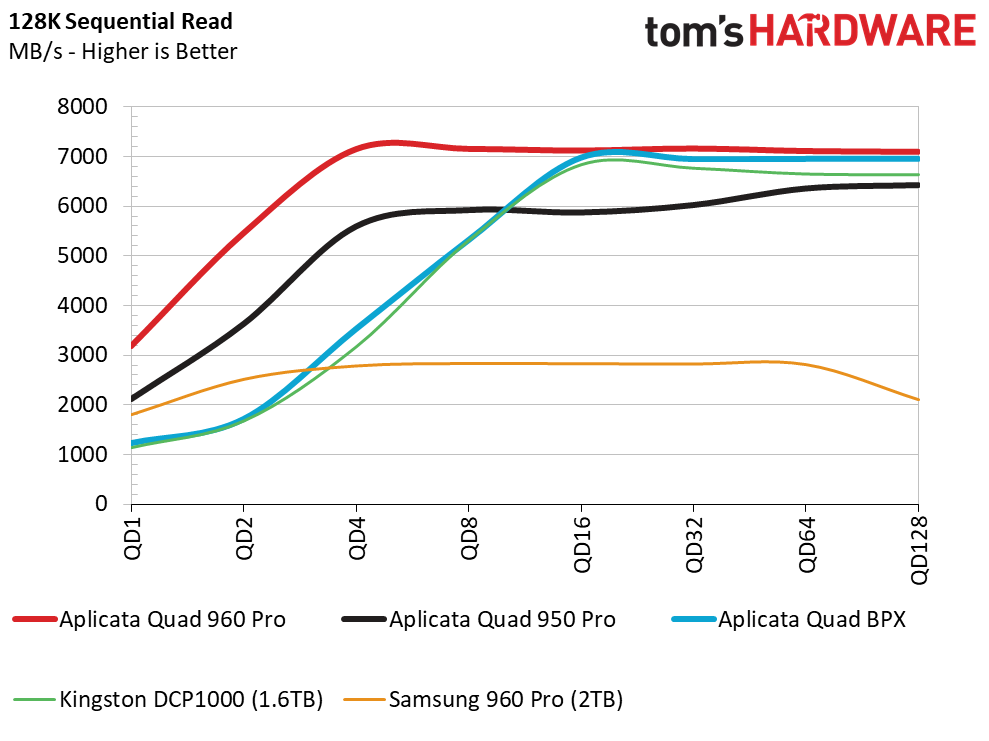
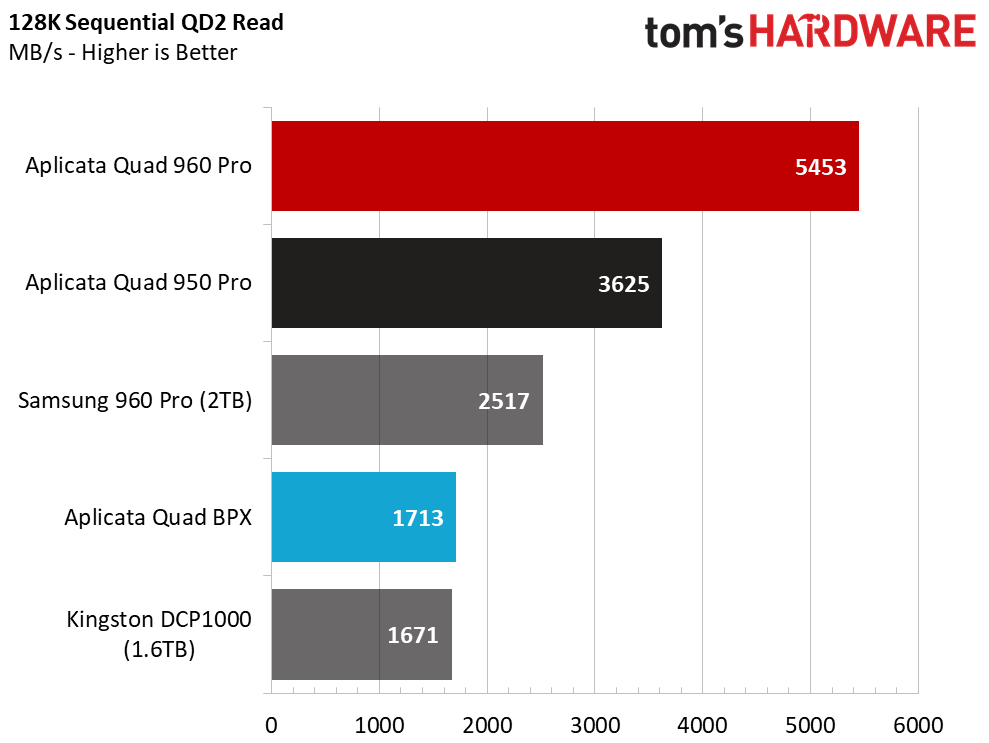
It isn't surprising to see the two Samsung NVMe arrays provide explosive performance at low queue depths. Samsung's low-QD performance is at least a generation or two ahead of the other manufacturers. The two Samsung arrays deliver a significant performance increase over a single 960 Pro.
The more modest array with four MyDigitalSSD BPX 240GB NVMe SSDs provides a nice increase over a single drive. The BPX drives in the Aplicata adapter match Kingston's sequential read performance.
Sequential Write Performance
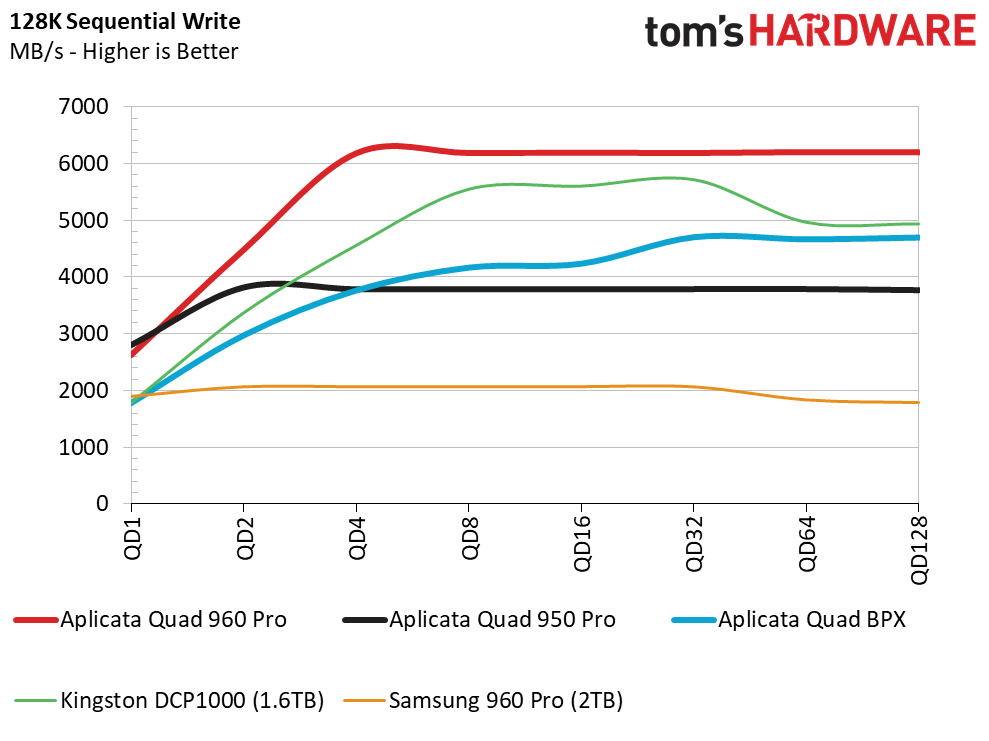

Sequential write performance is off the charts! We actually had to go in and fatten up the chart's axis to show the RAID 0 arrays.
10-gigabit Ethernet delivers just over 1000 MB/s of throughput. A single Samsung 960 Pro can take in your data from across the network, but the Aplicata is fast enough to soak up 56Gb/s Infiniband traffic with commodity SSDs.
The sequential write test shatters our hopes of matching the Kingston DCP1000 with low-cost consumer SSDs. We are using smaller and slightly slower E7 SSDs, but the DCP1000 provides a big boost over our DIY version.
Random Read Performance
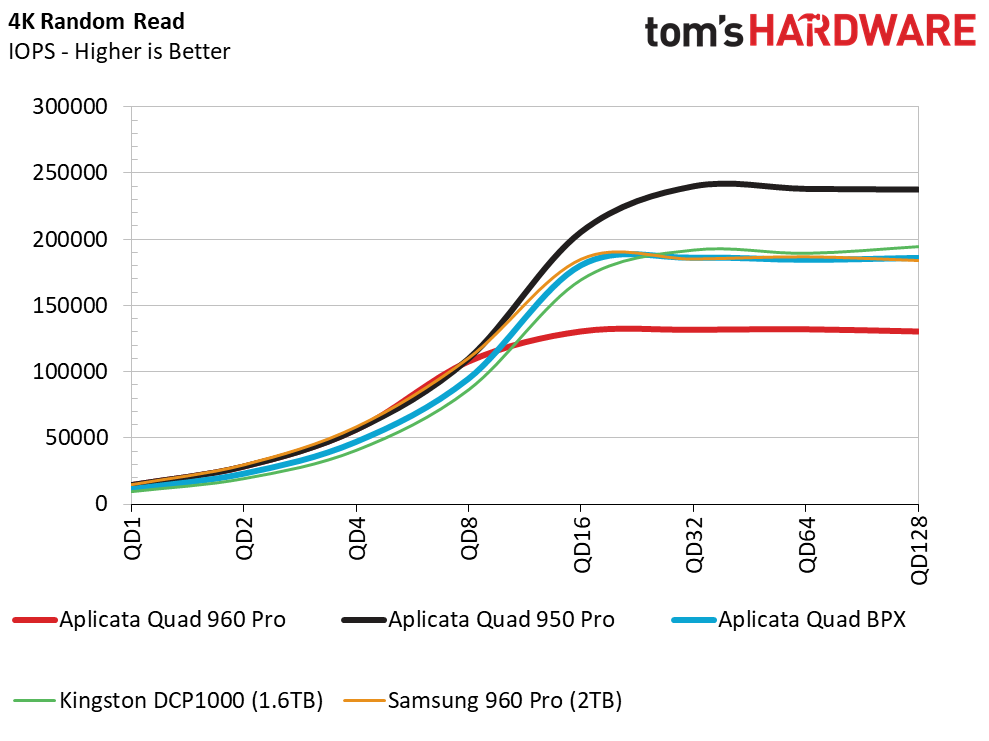
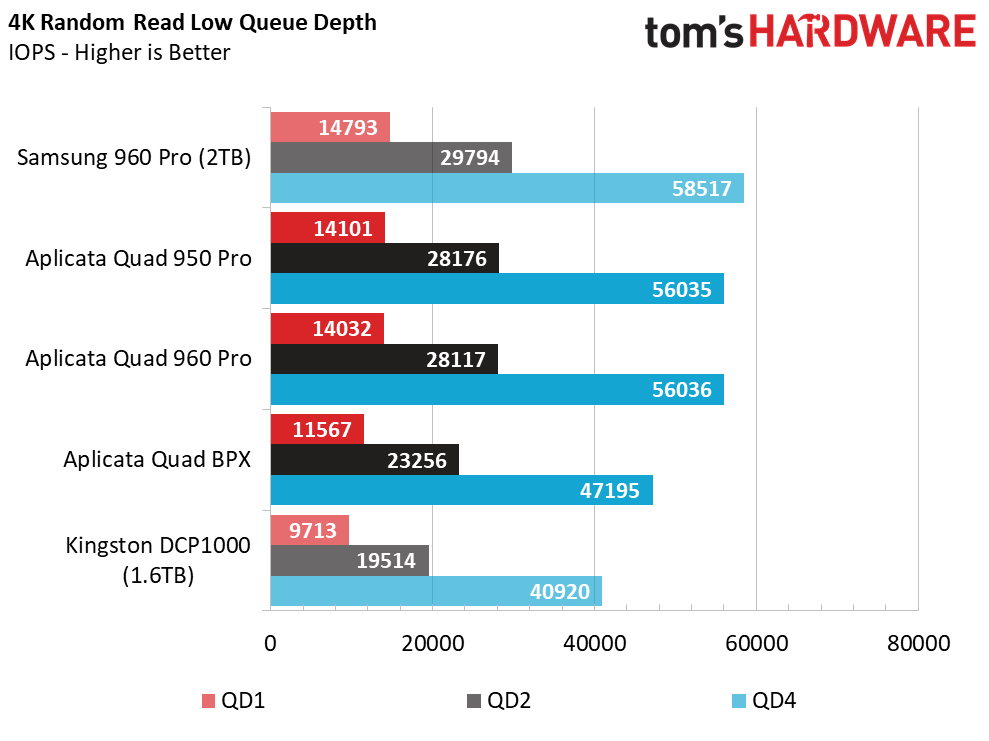
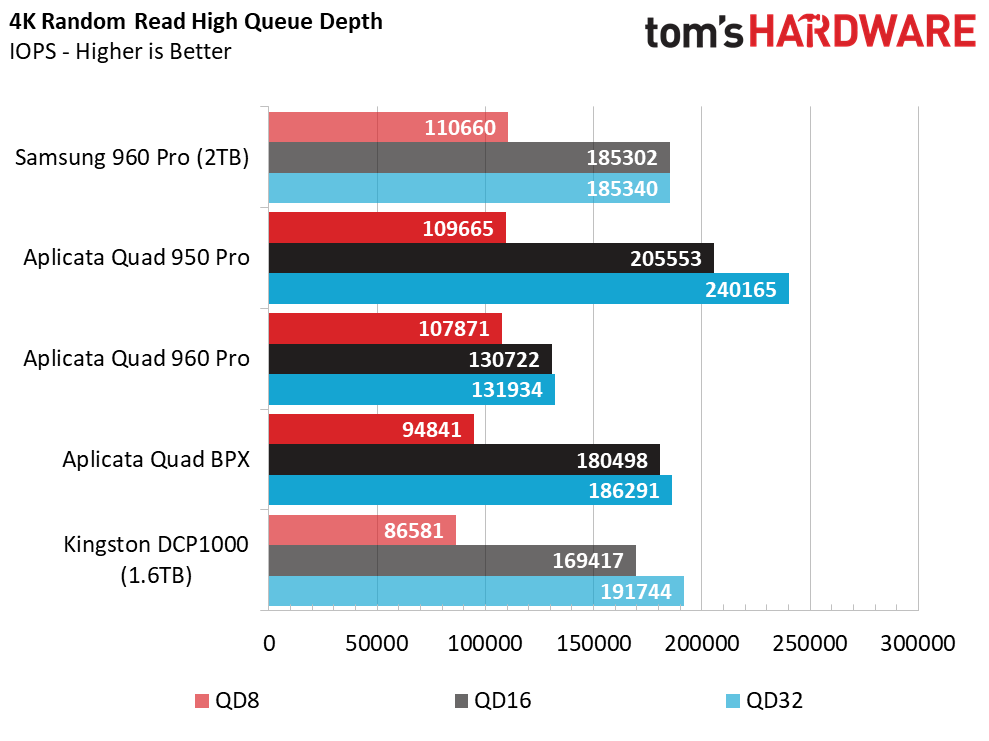
We saw a modest improvement with the Aplicata arrays at low queue depths during write workloads, but that didn't carry over to the random read tests. The arrays provide similar performance up to QD8, but we see some separation beyond that point. The arrays follow the same trajectory that we would see with single devices, just amplified.
Random Write Performance
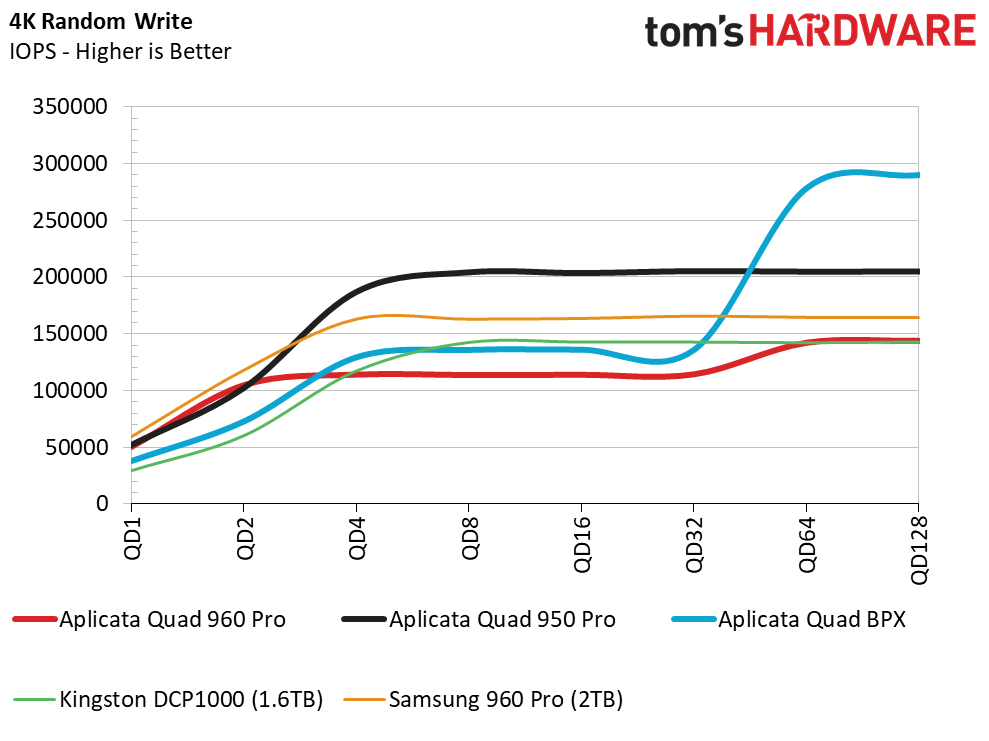
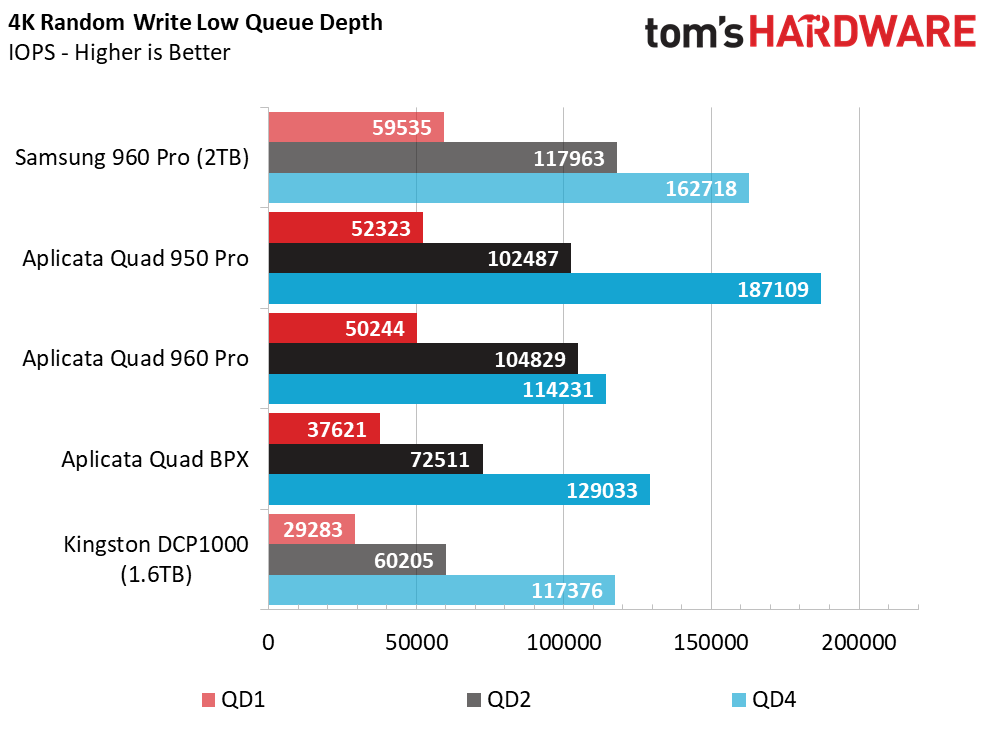
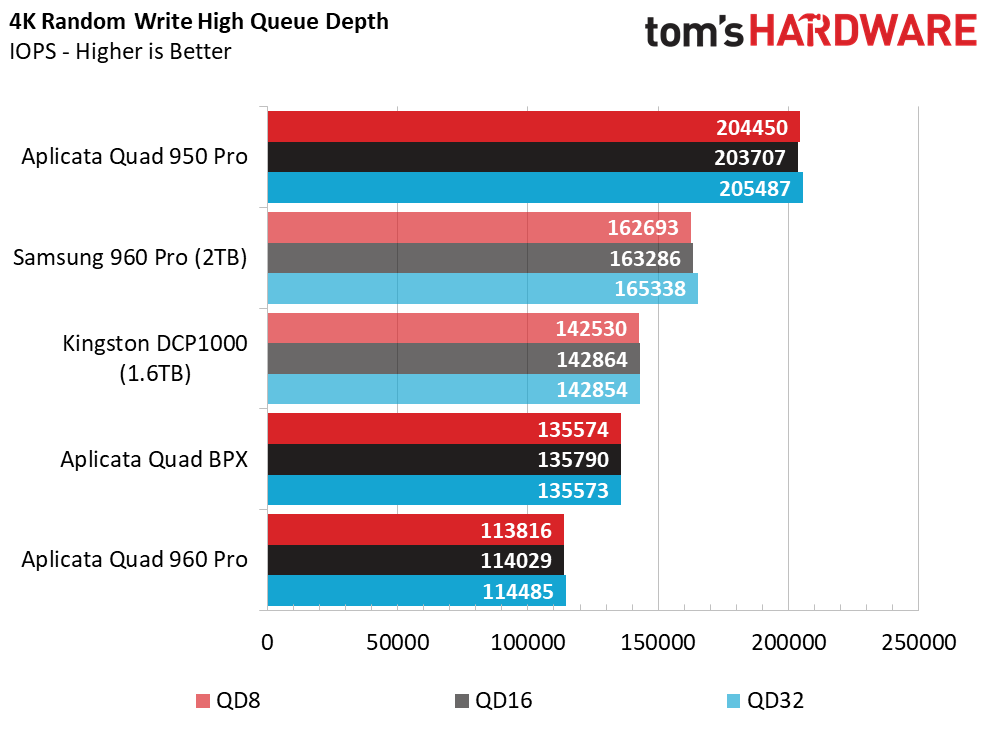
The random write results show lower performance than expected. This may be due to the Windows software RAID overhead. This is one area we expect Intel's vROC will increase performance. Surprisingly, the 960 Pro array results are lower than a single 960 Pro.
80% Mixed Sequential Workload
We describe our mixed workload testing in detail here and describe our steady state tests here.
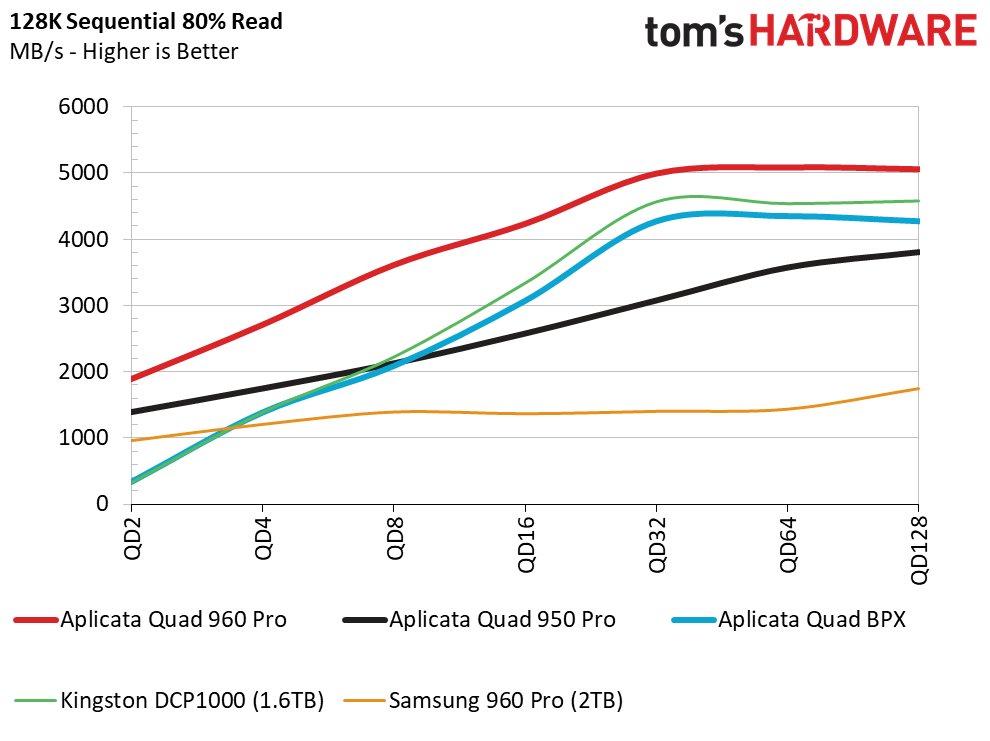
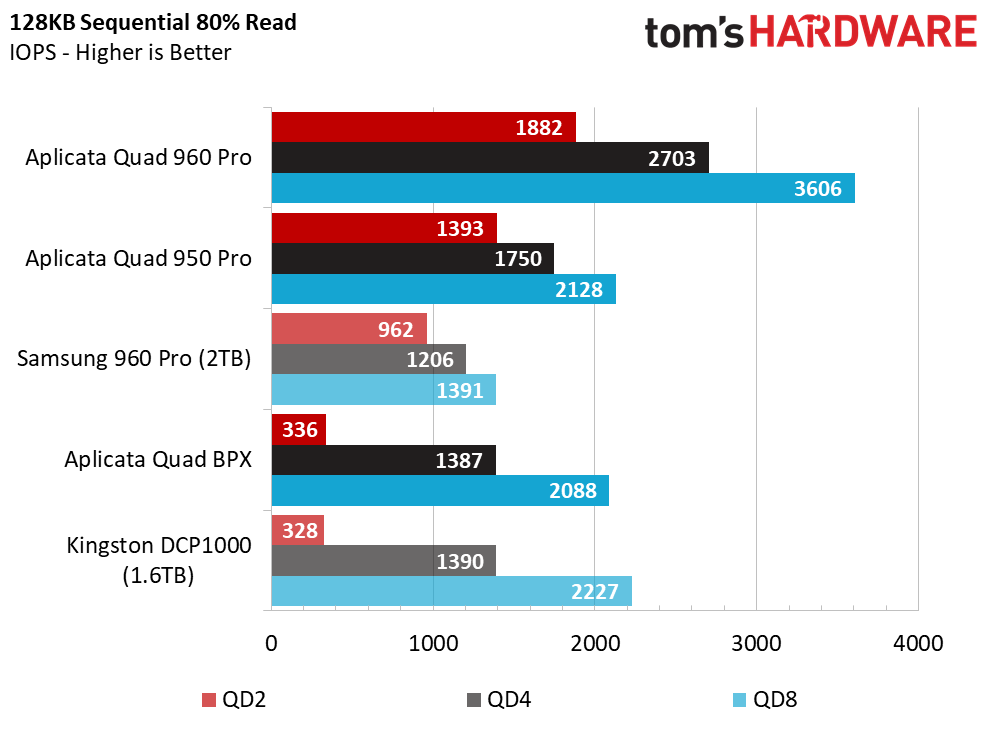
There is a massive performance delta between the single 960 Pro and the four-drive 960 Pro RAID 0 array. The array doubles throughput performance at QD2, and by QD32 it offers triple the performance. Tasks like video editing will see a big performance increase if your processor is strong enough to take advantage of the additional throughput.
80% Mixed Random Workload
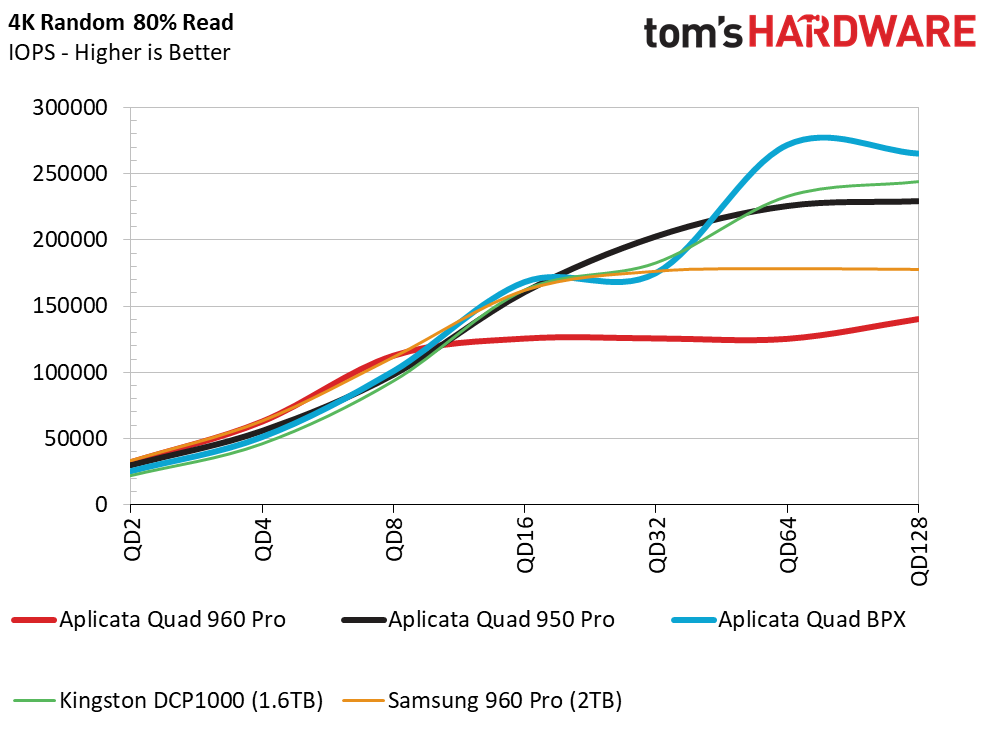

The Windows software RAID hurts random performance. Don't get me wrong, the array results are still impressive even by today's NVMe SSD standards, but without vROC, these products are best for sequential workloads.
Random Steady-State
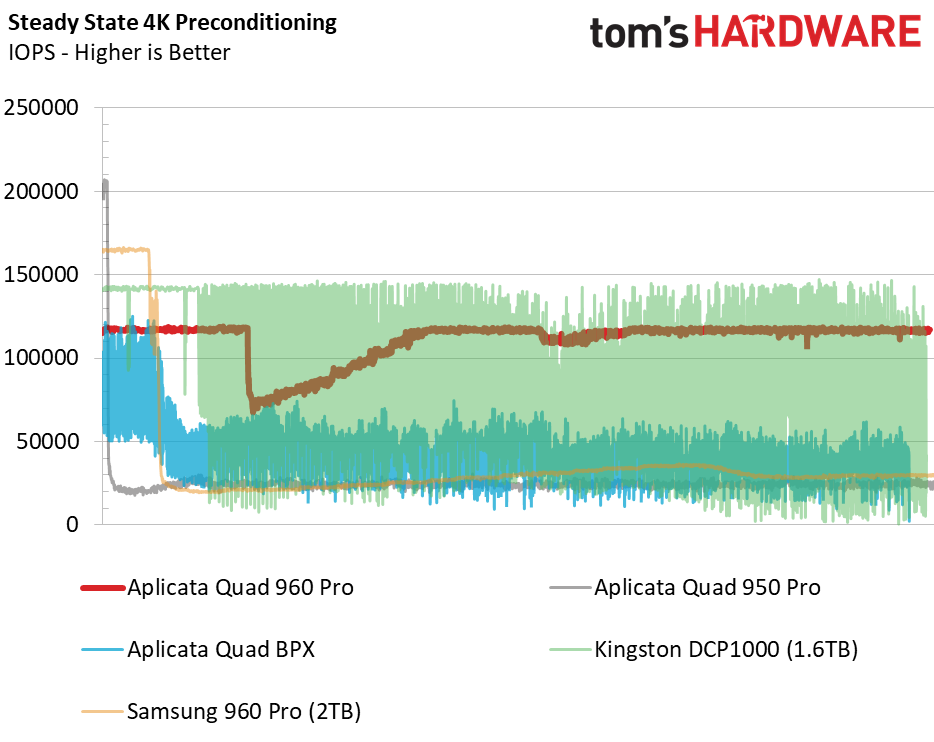
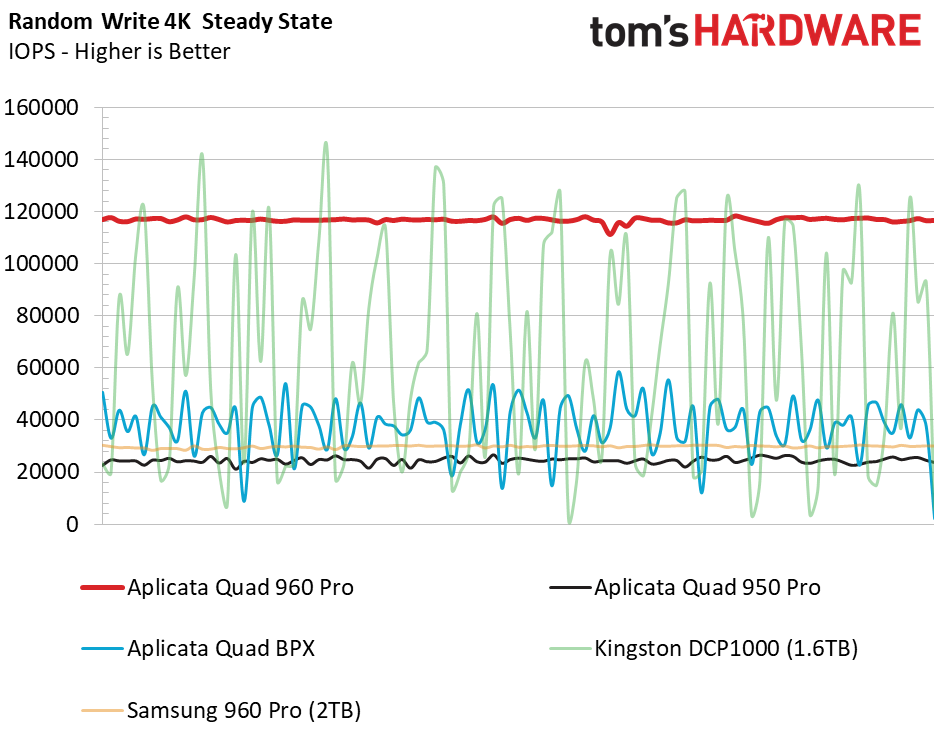
Random write performance looks a bit different when the drives are in a steady state. The 960 Pro SSD array outperforms the single drive by a large margin. When Samsung released the 960 series, it was very difficult to find drives in stock. We heard rumors that data centers were buying them in large numbers because they scaled so well and provided an excellent cost to performance ratio. This test shows why.
The Phison E7-based Kingston DCP1000 provides better performance than the Aplicata E7 array due to its extra spare area.
PCMark 8 Real-World Software Performance
For details on our real-world software performance testing, please click here.
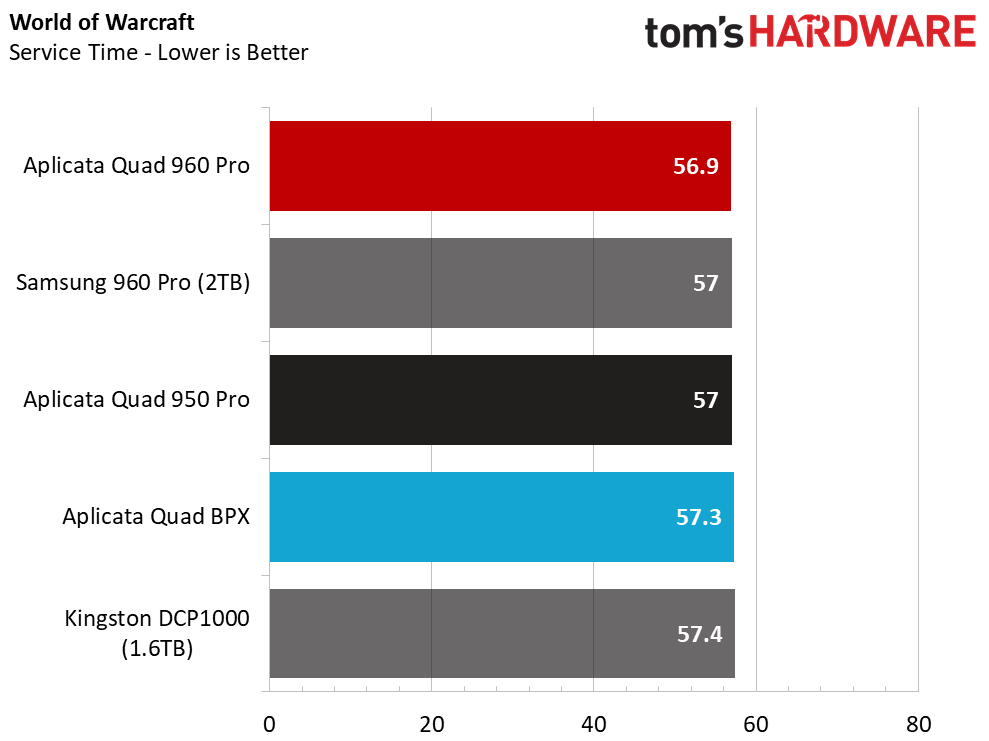
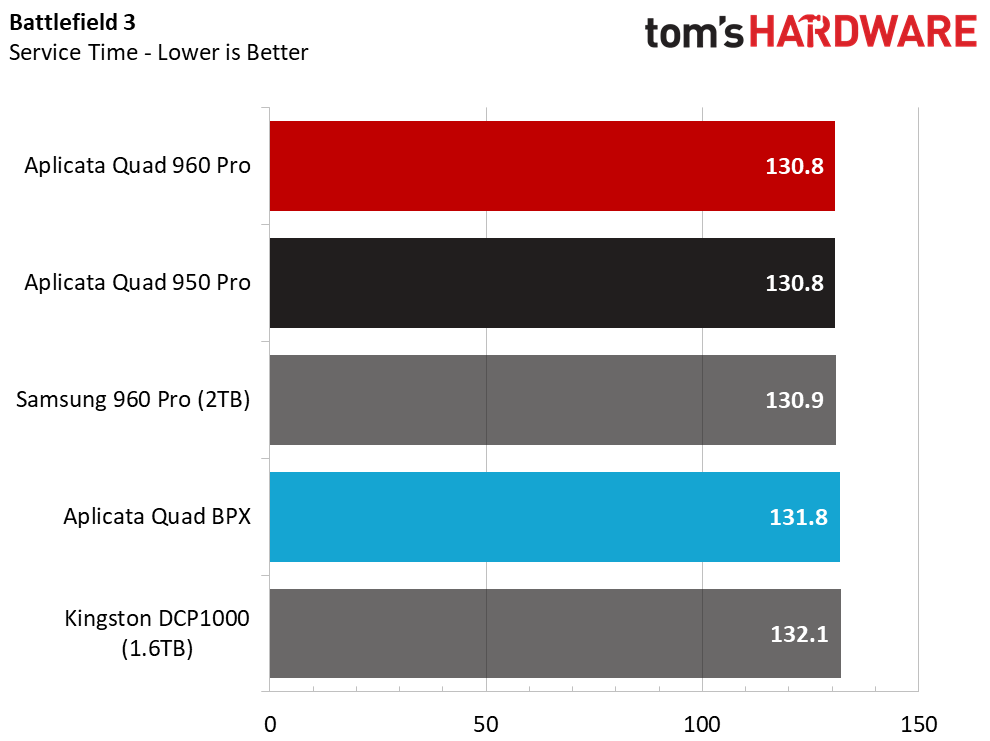

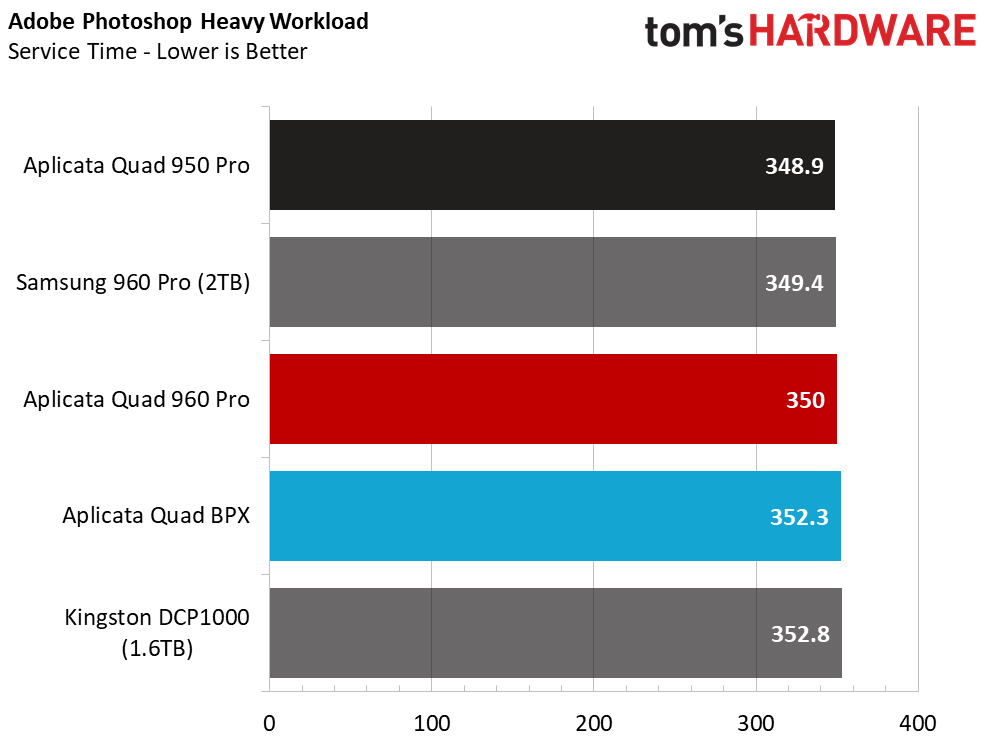
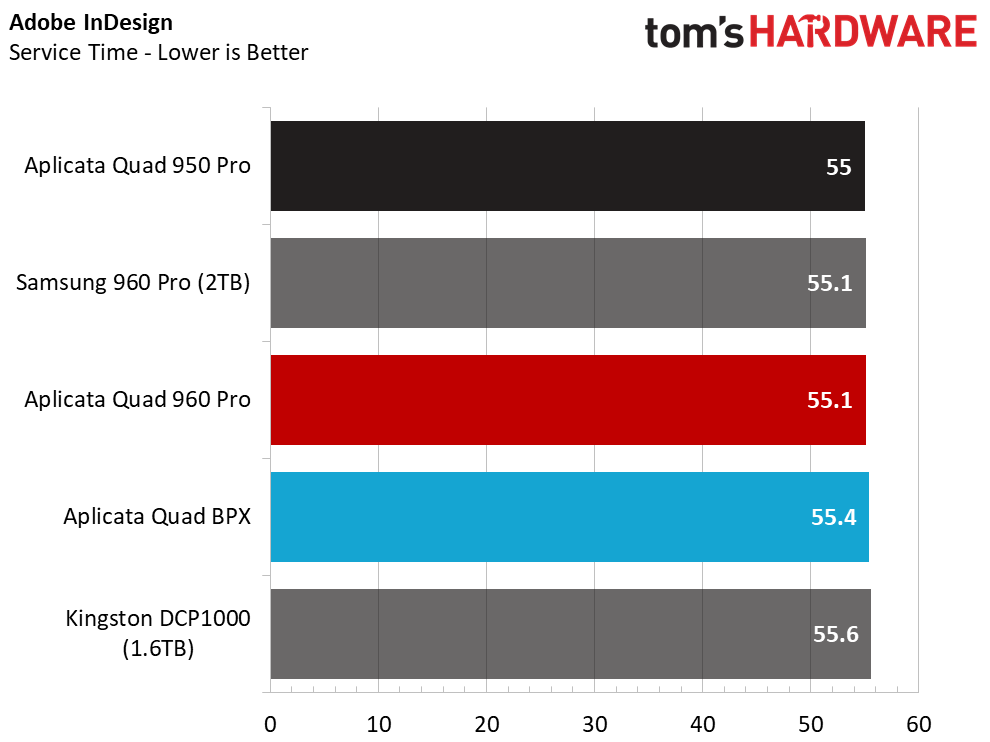

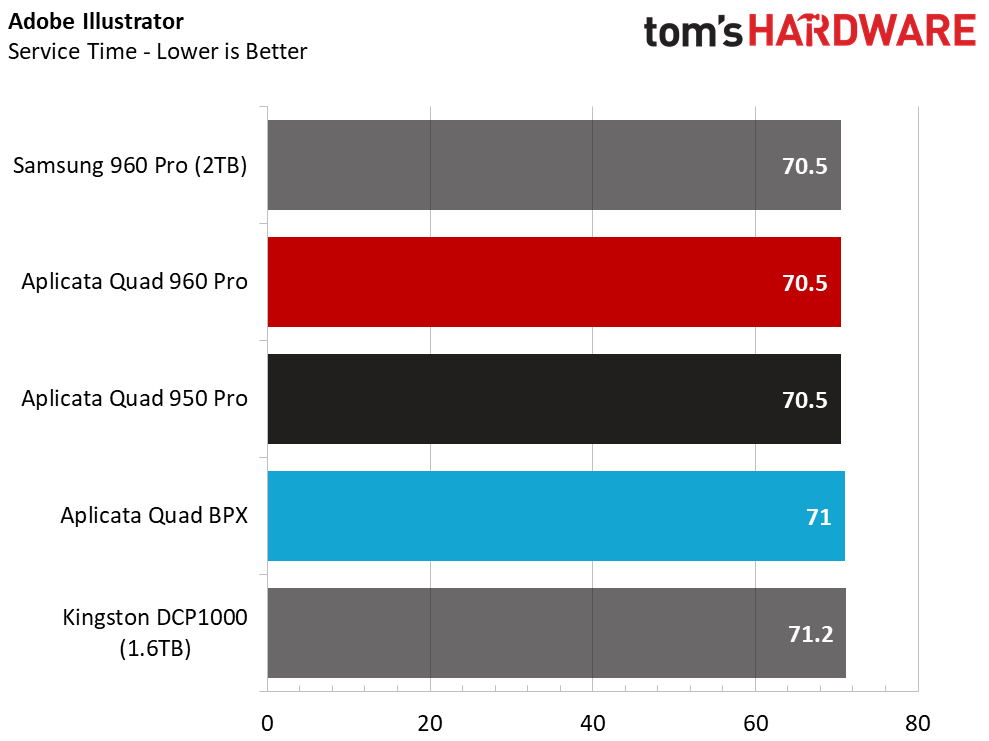
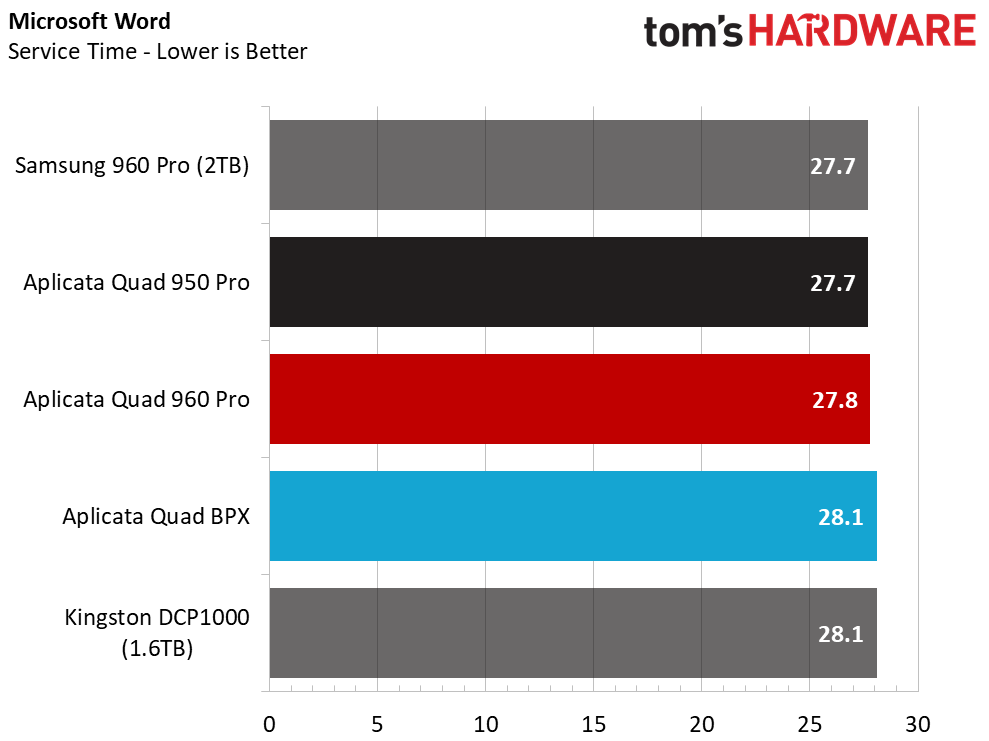

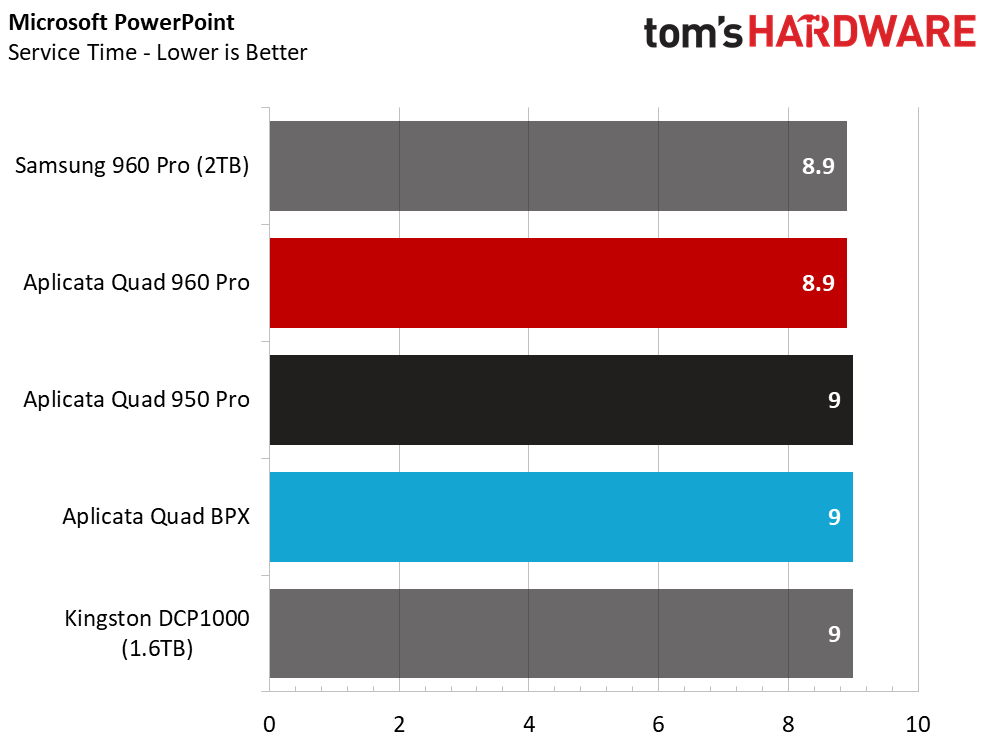
Our desktop application tests show that performance is very similar with this class of products. The arrays don't always increase performance over a single large NVMe SSD, as shown by comparing the two 960 Pro configurations.
Application Storage Bandwidth
A Samsung 950 Pro array is actually faster than a single 960 Pro in this test. The same is true for the software RAID 0 array, but the results are dampened somewhat with the array. The single 960 Pro is still faster in these tests than the array due to the low-QD random accesses in these tests.
The two Photoshop tests use the most sequential data, but the performance is much closer than we thought it would be. A processor with higher single threaded performance, like a Core i7-7700K, may show a larger difference due to its higher clock speed. The Intel Core i9-7900X wields more cores than a Core i7-7700K, but its clock speed is much lower.
MORE: Best SSDs
MORE: How We Test HDDs And SSDs
MORE: All SSD Content
Current page: Aplicata Quad M.2 Performance Testing
Prev Page Specifications & Features Next Page Conclusion
Chris Ramseyer was a senior contributing editor for Tom's Hardware. He tested and reviewed consumer storage.
-
dudmont Ram, when the dongle shows, will you be doing a test with this and similar products, with 32gb Optanes?Reply -
daglesj I hope the 3 or so of you that can actually exploit this performance have fun using it.Reply -
dudmont Reply20196606 said:I hope the 3 or so of you that can actually exploit this performance have fun using it.
While I wholeheartedly agree with you, there's a certain kid in a candy store kind of thing about articles like this. -
takeshi7 I would have loved to see this with 4 of the Intel Optane 32GB drives installed. That would be the fastest 128GB SSD ever.Reply -
AnimeMania I was too stupid to understand anything the article said, but not too stupid to have questions. Are you allowed to mix and match the four M.2 SSDs with different brands and capacities? Do the four M.2 SSDs appear as 4 different drives (with different drive letters) or does that depend on if they are RAIDed?Reply -
PancakePuppy Reply20197050 said:I was too stupid to understand anything the article said, but not too stupid to have questions. Are you allowed to mix and match the four M.2 SSDs with different brands and capacities? Do the four M.2 SSDs appear as 4 different drives (with different drive letters) or does that depend on if they are RAIDed?
Functionally, the card is just a carrier for the PCIe packet switch, associated support components, and M.2 connectors. It should be completely unaware of NVMe, so you could plug in 4 of the same SSDs, or 4 completely different ones, or 2 SSDs and 2 M.2 to PCIe edge connector adapters, all fair game. -
DerekA_C curious as to why this isn't added to the backside of eatx or atx boards or even matx boards with some kind of heansink plate particularly to the x299 and x399 boards that support enough pcie lanes.Reply -
bit_user Running a RAID-0 of 4 drives mostly makes sense if you're using it for caching or scratch space. I wouldn't use this to hold the primary copy of any data I really care about.Reply
Now, if they included a RAID-5 controller that could keep up with these drives, that would be very interesting.
-
bit_user Reply
Hmmm...20197941 said:curious as to why this isn't added to the backside of eatx or atx boards or even matx boards with some kind of heansink plate particularly to the x299 and x399 boards that support enough pcie lanes.
■ Cost - high end motherboards are already quite expensive. They couldn't add something like this without driving away nearly all the customers who didn't want this specific feature.
■ Cooling - most cases don't direct much airflow to the underside of mobos.
■ Accessibility - most cases require motherboard removal to access the bottom, except for a cutout under the CPU.
■ Small market - it's not uncommon to find 2x M.2 NVMe slots on higher-end motherboards. What % of the market for a given motherboard really wants > 2?Need we go on?
IMO, this is the best option: easily accessible, likely to have good airflow, and can be paired with many different motherboards. You could even install multiple, if you're doing something particularly crazy. Like trying to host big files over 100 Gbps Ethernet.
BTW, if a motherboard did add something like this, then it would make more sense to place the M.2 boards perpendicular to the motherboard and add a bracket to hold the other ends. This could take the place of one of the expansion card slots, so you'd have some airflow moving across them. -
alan.campbell99 I'm interested in trying this but it seems it won't ship to New Zealand, bugger.Reply

